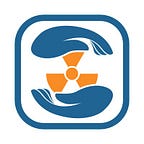The History of Radiotherapy
So back in 1895, a scientists named Roentgen was studying cathode rays using a gas discharge tube. He saw that other forms of radiation were also being produced that he could detect outside his tube. Because he detecting the radiation outside the tube meant it was penetrating through different opaque substances, which he was fascinated by. It produces fluorescence, blacked photographic film, and ionized gas. As he didn’t know what these rays where he called them “x”-rays, assigning them the variable x, as is normal in mathematical and physics when something is unknown. From then on we have attribute the discovery of x-rays to Roentgen and it’s common for x-rays to also be referred to as Roentgen rays as well.
As with any discovery the uses of the newly discovered device were quickly implemented. The fields of radiotherapy and radiology were born. Famously, Roentgen has imaged his wife’s hand, showing clearly the ring she was wearing and her bones. This became the first radiology image taken. He was also one of the first to show some cautions and apply principles of radiation protection. I mean he didn’t image his own hand now did he.
In 1986, Roentgens device’ was used by a doctor in Chicago to treat a cancer. Three years later, Swedish doctors had started treating several patients who were suffering from head and neck cancer. Roentgen received the Nobel prize for his discovery of radiation in 1901. Its incredible to think that we have been exploiting the benefits of radiation treatment for over 100 years now!
Early radiotherapy devices started to become commercially available in 1910. These devices produce x-rays in the kilo-electronvolt energy range. An electronvolt is just a unit of energy, strictly speaking it is the energy gained by an electron traveling across a potential voltage difference of 1 volt. So a kilo electronvolts is 1000 electronvolts, hence you need a potential voltage of 1000 volts to produce kilovoltage x-rays through a process or electron acceleration and bremsstrahlung.
Just to put this in some sort of perspective the energy range that visible light has is between 1.6 to 3.1 electronvolts, or eV. So these x-rays have roughly 1000 times more energy than light rays, but remember that this is per photon, or per light ray. This is not a total energy as you can have many light photons which add together to have more energy than a few x-ray photons. The number of photons that we have is called the radiation fluence. So to get the total output of a machine is the fluence times the energy per photon.
These early machines were not that good at treating deeper tumors or target, mind you at this stage there imaging systems were not that great at being able to identify the tumor. As I explained in Radiation: What is it the higher the energy of the x-ray the better its penetration is.
The effects of radiation were less well known back then.Clinicians experimented with how much radiation to deliver to patients and over what time period. One often quoted dose they use to give is called the erythema dose, which basically meant the dose that could be delivered to the patient until their skin started to turn red. From about 1901 to 1914 this was the convention which seems quite barbaric when you look back on it. One large dose of radiation for a patient’s treatment, roughly just a little less than what would be needed to turn the skin red. An Austrian doctor figured out in 1914 that it was better to give more treatments of less dose than one large treatment with all the dose. This method is called fractionated radiotherapy. Giving smaller doses over time gives the healthy tissue time to repair itself. This idea has been on of the instrumental ideas in radiotherapy and radiobiology so I will come back to that in another post.
There are few of these early machines, or even newer versions of the same type of machine is still in use today. Mainly because the radiation is not penetrative enough. An engineering race was on to develop higher and higher energy x-ray machines. However, there are still kilovoltage machines in use today to treat skin cancers and other tumors close to the surface.
This post is part of a series of posts on Radiotherapy Machines and Devices about many of the different radiotherapy machines that have, or are still, being used in radiotherapy. As well as some applications and techniques performed with these machines. Be mindful that everything I know about these older machines comes from either reading about them or stories from older colleagues, much much older colleagues. Who themselves may have never worked on them but where just told by their older colleagues. Hence why I refer to it as the prehistoric era of radiotherapy.
By Jim from Radical Radiation Remedy | RadicalRadiationRemed.com
Jim is a Medical Physicist working in a radiotherapy centre who runs the team over at Radical Radiation Remedy. They blogs about radiation and radiotherapy over at radicalradiationremedy.com
Originally published at www.radicalradiationremedy.com.
